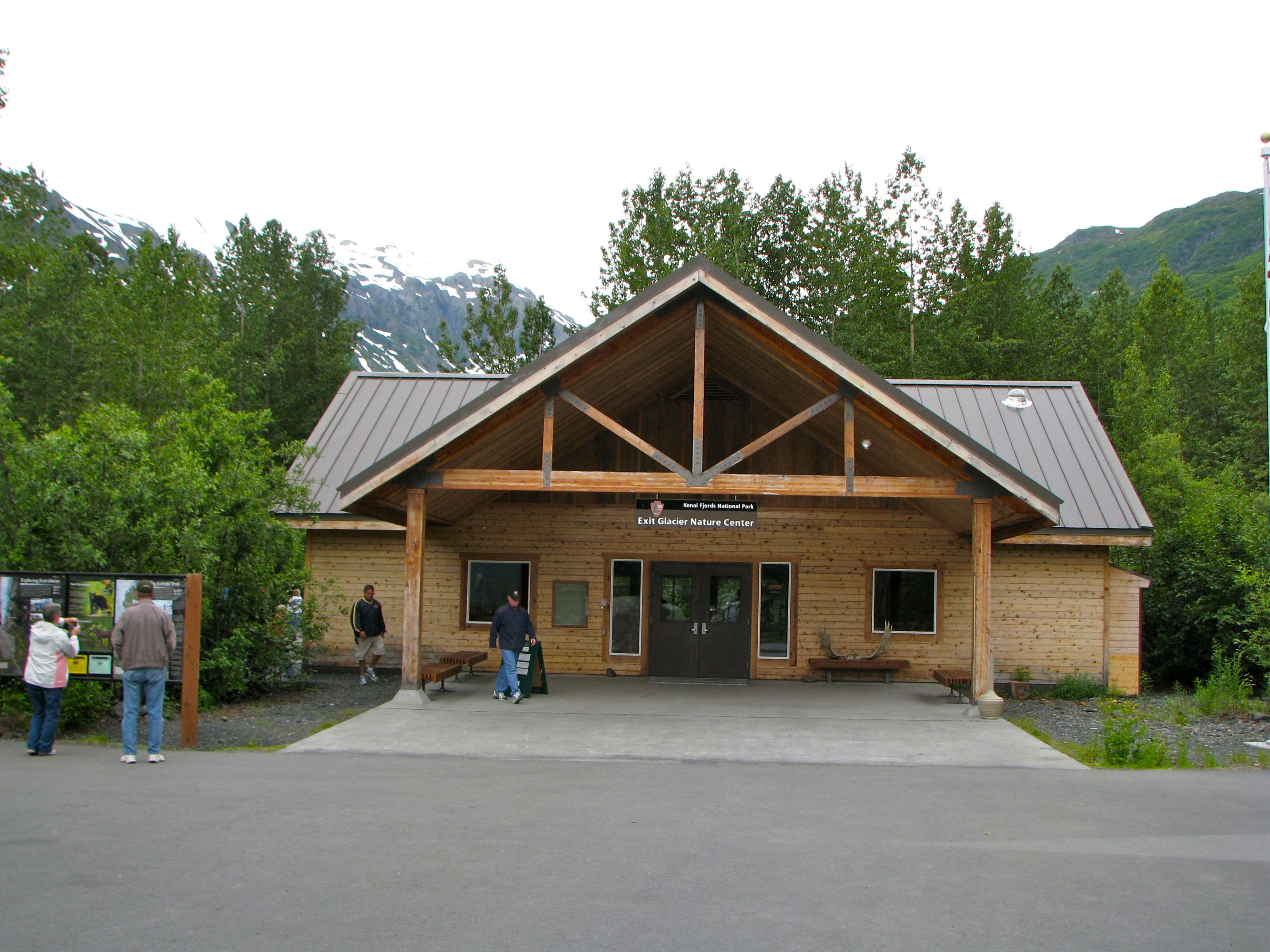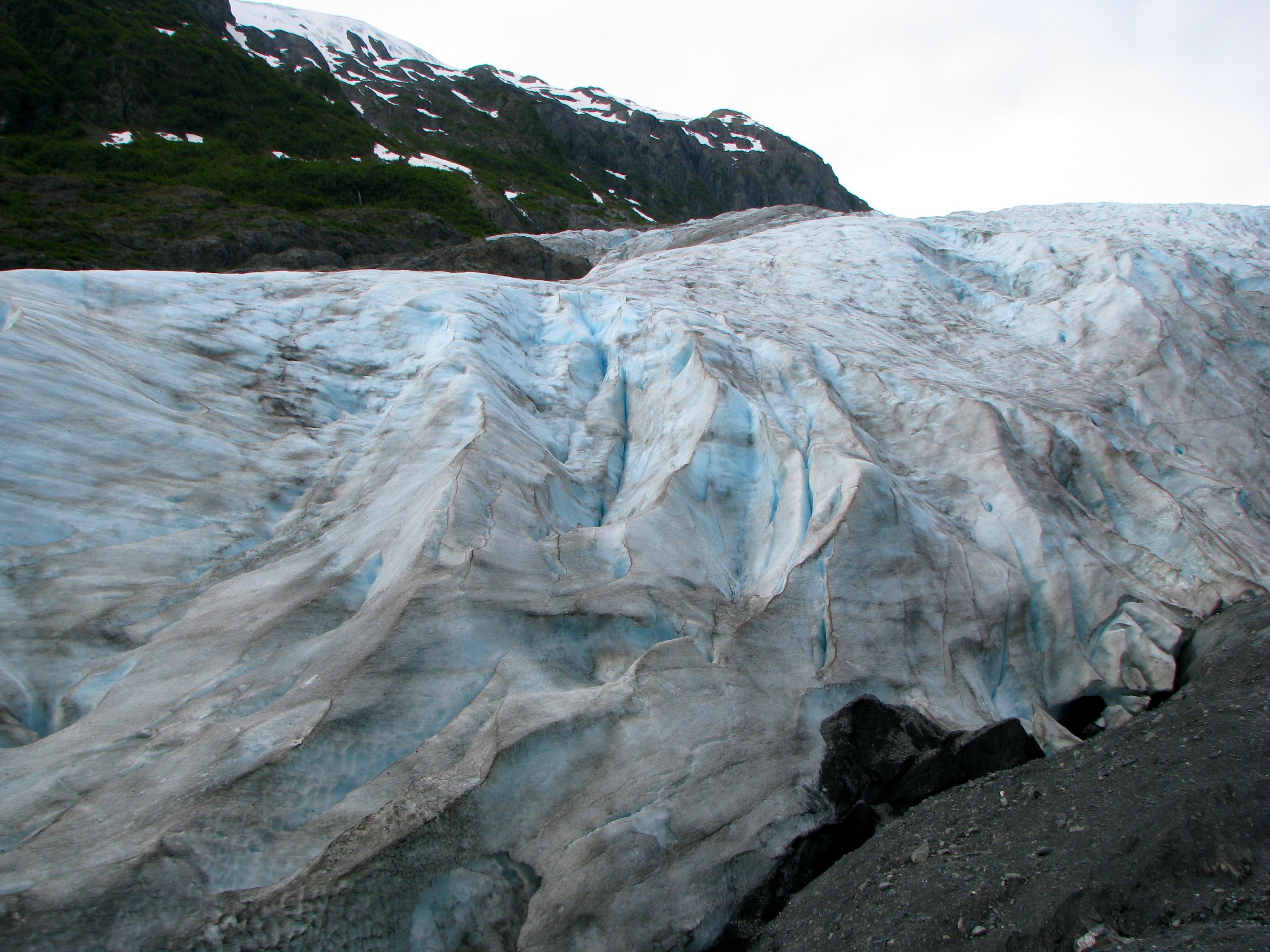Seward, Kenai Peninsula Borough, Alaska, USA (July 2010)

The vast preponderance of Kenai Fjords National Park is not accessible by automobile. It’s ruggedly inaccessible with the easiest ways to see it by air [see my Harding Icefield page] or by sea [see my Kenai Fjords page].
There is one notable exception: Exit Glacier. It’s not only an easily accessible corner of the park but one of the few places in the United States where someone can drive an automobile almost all the way up to a glacier. It’s an easy drive from Seward with its own 9-mile spur road leading directly to the parking lot, which makes it practically impossible to get lost (map).
The National Park Service provides a nice Visitors Center adjacent to the parking lot with easy access to a trailhead. The first length of the trail is paved and very simple to negotiate. It gets a little rocky on the final portion but offers nothing strenuous by any means. Anyone at least moderately ambulatory should be able to negotiate the trial without too much difficulty.
The Glacier

Exit Glacier spills from the massive Harding Icefield like so many others, albeit currently retreating rapidly. One of the exhibits shows where the glacier extended ten years ago and the difference is astounding. Exit Glacier continues to literallymelt away before one’s eyes. That has left a lot of bedrock exposed so that visitors can observe the power of glaciers in scouring the surrounding landscape.
There are also trails alongside Exit Glacier, leading up to the Harding Icefield. We didn’t follow the path because we had children in tow but a lot of visitors seemed to be taking the trek. Some people even hike across the entire icefield. This is a difficult task first completed only in 1968. That’s how Exit Glacier got its name — it was the exit point of the first expedition to make it across the icefield on foot.
The Reward

The views from the base of the glacier are amazing. Coastal Mountains dominate the background while a braided stream formed along the glacier’s outwash plain snakes across the valley floor. Standing there, one hears the glacier creak and pop and feels the rushing wind. The temperature differences between ancient ice and summer temperatures creates a distinct microclimate with a continuous strong breeze as one gets closer to the base. It’s almost like a living, breathing being with its own distinct personality.
Melting

We descended and hiked over to the outwash plain. The water has the distinct color often associated with glacial runoff, a murky milky gray. This occurs because stone has been pulverized by the power of the glacier into a fine silt. Mix it with water and it creates the unusual coloring. We were impressed by the amount of water coming off the glacier, yet another sign of how quickly it’s melting. It ran as a heavy, rushing stream.

Leave a Reply